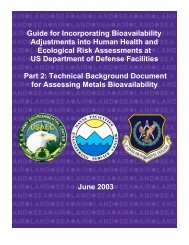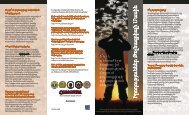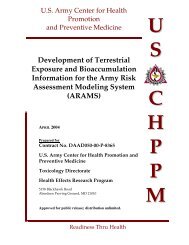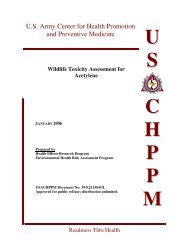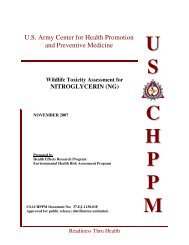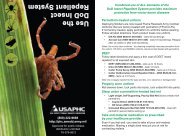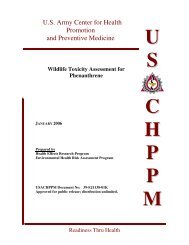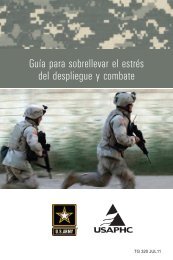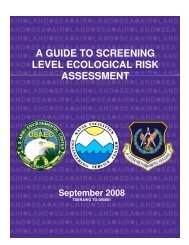Tri-Service Remedial Project Manager's Guide for Ecological Risk ...
Tri-Service Remedial Project Manager's Guide for Ecological Risk ...
Tri-Service Remedial Project Manager's Guide for Ecological Risk ...
You also want an ePaper? Increase the reach of your titles
YUMPU automatically turns print PDFs into web optimized ePapers that Google loves.
iomarkers may be induced by many man-made or natural stressors. When biomarkers areused, other indicators should be utilized to assure that the stressor causes the effects inquestion.Biomonitoring: 1 Use of living organisms as “sensors” to detect changes in environmentalconditions that might threaten living organisms in the environment.Body Burden: 3 The amount of a substance that has accumulated in the tissue of an exposedorganism, usually expressed as the concentration of the substance in a particular organ or in thewhole organism.Characterization of <strong>Ecological</strong> Effects: 1 A portion of the analysis phase of ecological riskassessment that evaluates the ability of a stressor to cause adverse effects under a particular setof circumstances.Characterization of Exposure: 1 A portion of the analysis phase of ecological risk assessmentthat evaluates the interaction of the stressor with one or more ecological components. Exposurecan be expressed as co-occurrence, or contact depending on the stressor and the ecologicalcomponent involved.Chemical (Contaminant, Constituent) of Potential <strong>Ecological</strong> Concern (COPEC): 1 Asubstance detected at a hazardous waste site that has the potential to affect ecological receptorsadversely due to its concentration, distribution, and mode of toxicity.Chronic: 1,2 Involving a stimulus or response that continues <strong>for</strong> a long time; often from severalweeks to years, depending on the reproductive life cycle of the species (conventionally includesat least a tenth of the life span of a species). It can be used to define either the exposure or aneffect. Chronic exposures typically induce a biological response of relatively slow progress andlong duration.Chronic Response: 1 The response of (or effect on) an organism to a chemical that is notimmediately or directly lethal to the organism, but can affect long term health or survival of anorganism. Example: Population decline of birds due to chronic exposure to DDT.Chronic Toxicity Test: 3 A toxicity test that spans a significant portion of the life cycle of the testorganism (e.g., 10% or more) and examines effects on such parameters as metabolism, growth,reproduction, and survival.Community: 1,4 An assemblage of populations of different species within a specified location andtime. It is a broad term that may be used to designate natural assemblages of different sizes(e.g., organisms inhabiting a rotting log, organisms inhabiting a vast <strong>for</strong>est or an ocean).Concentration: 1 The relative amount of a substance in an environmental medium, expressed byrelative mass (e.g. mg/kg), volume (ml/L), or number of units (e.g., parts per million (ppm)).Concentration-Response Curve: 1 A curve describing the relationship between concentrationand percent of the test population responding. Example: soil concentration of a contaminantversus percent earthworm mortality.Key Terms - 2




